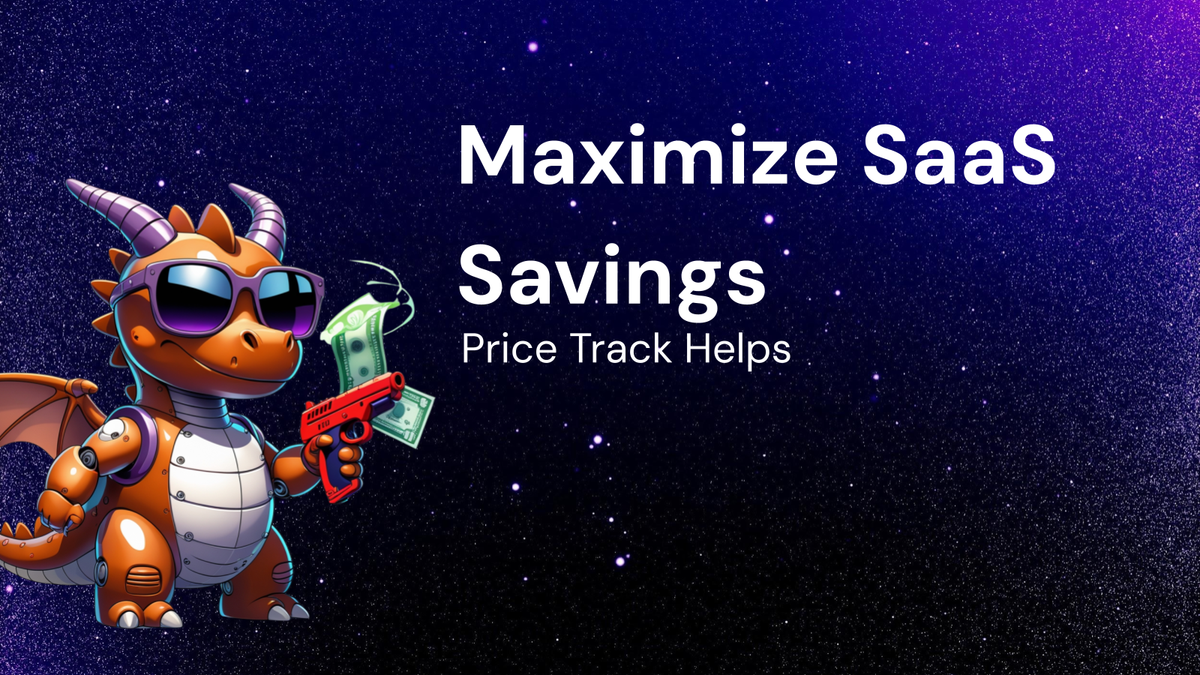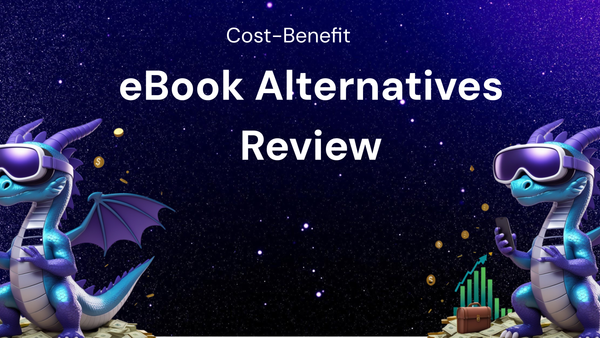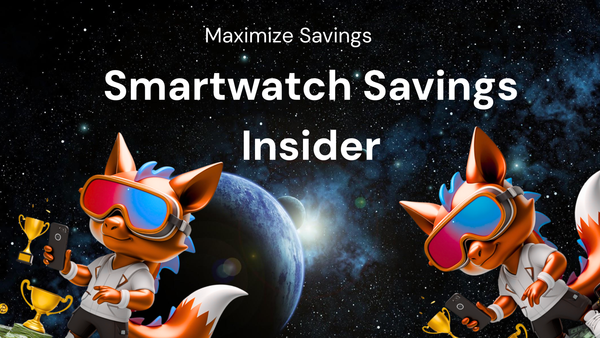How Price Tracking Helps Maximize Savings on SaaS

How Price Tracking Helps Maximize Savings on SaaS
In today's digital landscape, Software as a Service (SaaS) has become the backbone of countless businesses, from startups to Fortune 500 companies. Its accessibility, scalability, and pay-as-you-go model have revolutionized how we work and collaborate. However, the proliferation of SaaS tools also presents a challenge: managing costs effectively. With numerous subscriptions, varying pricing structures, and fluctuating offers, it's easy to overspend on software. This is where price tracking steps in as a powerful tool to maximize savings on SaaS.
The SaaS Landscape: A Double-Edged Sword
SaaS offers numerous advantages:
- Reduced upfront costs: Eliminates the need for hefty investments in hardware and software licenses.
- Scalability: Easily adjust subscriptions based on evolving business needs.
- Accessibility: Access software from anywhere with an internet connection.
- Automatic updates: Vendors handle maintenance and updates, freeing up IT resources.
- Collaboration: Facilitates seamless collaboration across teams and locations.
However, these benefits come with potential pitfalls:
- Subscription creep: The gradual accumulation of unused or underutilized subscriptions.
- Lack of visibility: Difficulty tracking all SaaS subscriptions and their associated costs.
- Missed renewal opportunities: Paying full price when discounts or alternative plans are available.
- Vendor lock-in: Dependence on a specific vendor, limiting negotiation power.
- Overspending on features: Paying for features that are rarely or never used.
Without proper management, SaaS spending can quickly spiral out of control, impacting profitability and hindering growth.
What is SaaS Price Tracking?
SaaS price tracking involves monitoring the prices of software subscriptions over time. It's a proactive approach to managing SaaS costs by:
- Gathering data: Collecting information on pricing plans, discounts, promotions, and competitor offerings.
- Analyzing trends: Identifying patterns and fluctuations in pricing.
- Providing alerts: Notifying users of price drops, special offers, or renewal opportunities.
- Enabling informed decisions: Empowering businesses to make data-driven decisions about their SaaS subscriptions.
Price tracking can be done manually, but this is often time-consuming and prone to errors. Fortunately, various SaaS price tracking tools are available to automate the process and provide comprehensive insights.
How Price Tracking Maximizes SaaS Savings
Here's a detailed look at how price tracking can help you save money on your SaaS subscriptions:
1. Identifying Price Drops and Special Offers:
SaaS vendors frequently offer discounts, promotions, and limited-time deals to attract new customers or retain existing ones. Price tracking tools automatically monitor these offers, ensuring that you don't miss out on potential savings.
- Example: A project management tool you're using announces a 20% discount for new customers. Your price tracking tool alerts you to this offer, prompting you to negotiate a similar discount with your existing vendor or consider switching to the new provider.
- Benefit: Capitalizing on price drops and special offers can significantly reduce your overall SaaS spending.
2. Detecting Renewal Opportunities:
Renewal time is a critical opportunity to renegotiate pricing or explore alternative options. Price tracking tools can alert you well in advance of your subscription renewal date, giving you ample time to research and compare prices.
- Example: Your CRM software is up for renewal in three months. Your price tracking tool alerts you to this, prompting you to investigate competitor offerings and negotiate a better deal with your current vendor.
- Benefit: Leveraging renewal opportunities can lead to significant cost savings by negotiating better terms or switching to a more affordable provider.
3. Benchmarking Against Competitors:
Price tracking allows you to compare the prices of different SaaS tools that offer similar features. This information is invaluable for identifying overpriced subscriptions and finding more cost-effective alternatives.
- Example: You're using a marketing automation platform. Your price tracking tool reveals that a competitor offers a similar set of features at a lower price. This prompts you to evaluate the competitor's platform and potentially switch to save money.
- Benefit: Benchmarking against competitors ensures that you're paying a fair price for your SaaS tools.
4. Optimizing Subscription Plans:
Many SaaS vendors offer different subscription plans with varying features and pricing. Price tracking can help you identify whether you're paying for features that you don't need or underutilizing features that you're paying for.
- Example: You're on the highest tier of a video conferencing platform but only use a fraction of the available features. Your price tracking tool reveals that a lower-tier plan would meet your needs at a significantly lower cost.
- Benefit: Optimizing subscription plans ensures that you're only paying for the features you need, reducing unnecessary expenses.
5. Eliminating Redundant Subscriptions:
Over time, businesses often accumulate multiple SaaS subscriptions that perform similar functions. Price tracking can help you identify these redundant subscriptions and consolidate them to save money.
- Example: You have two different project management tools being used by different teams. Your price tracking tool highlights this redundancy, prompting you to standardize on a single tool and eliminate the duplicate subscription.
- Benefit: Eliminating redundant subscriptions streamlines your SaaS stack and reduces overall costs.
6. Negotiating with Vendors:
Armed with data on competitor pricing, special offers, and usage patterns, you'll be in a stronger position to negotiate with your SaaS vendors. Price tracking provides the information you need to justify your requests for discounts or better terms.
- Example: You're negotiating a renewal with your email marketing platform. Your price tracking tool shows that competitors are offering similar features at a lower price. You use this information to negotiate a discount with your current vendor, threatening to switch if they don't meet your demands.
- Benefit: Data-driven negotiation can lead to significant cost savings on your SaaS subscriptions.
7. Tracking Usage Patterns:
Some price tracking tools also track usage patterns, providing insights into how frequently your employees are using different SaaS applications. This information can help you identify underutilized subscriptions that can be canceled or downgraded.
- Example: You're paying for a premium design tool that's only being used by a small handful of employees. Your price tracking tool reveals this low usage, prompting you to explore alternative options or negotiate a lower price with the vendor.
- Benefit: Tracking usage patterns ensures that you're only paying for software that's actively being used, maximizing your ROI.
8. Automating SaaS Management:
Many SaaS price tracking tools offer automation features that streamline the entire SaaS management process. This can save you time and effort while ensuring that you're always getting the best possible price.
- Example: Your price tracking tool automatically alerts you when a subscription is up for renewal, identifies potential cost savings, and even generates negotiation scripts for your vendor calls.
- Benefit: Automating SaaS management frees up your time to focus on other priorities while ensuring that your SaaS spending is optimized.
Implementing a SaaS Price Tracking Strategy:
To effectively leverage price tracking for SaaS savings, follow these steps:
1. Choose the Right Price Tracking Tool:
Select a tool that meets your specific needs and budget. Consider factors such as:
- Features: Does it offer the functionality you need, such as price alerts, competitor benchmarking, and usage tracking?
- Integrations: Does it integrate with your existing SaaS tools and financial systems?
- Ease of use: Is it user-friendly and easy to navigate?
- Pricing: Is it affordable and scalable to your business needs?
- Security: Does it protect your sensitive data?
2. Identify Your Key SaaS Subscriptions:
Focus on tracking the subscriptions that represent the largest portion of your SaaS spending. This will provide the biggest potential for savings.
3. Set Up Price Alerts:
Configure your price tracking tool to alert you to price drops, special offers, and renewal opportunities for your key subscriptions.
4. Regularly Review Pricing Data:
Dedicate time each week or month to review the pricing data collected by your price tracking tool. This will help you identify potential savings opportunities and make informed decisions about your SaaS subscriptions.
5. Negotiate with Vendors:
Use the data from your price tracking tool to negotiate better terms with your SaaS vendors. Be prepared to switch to a competitor if they're not willing to meet your demands.
6. Optimize Subscription Plans:
Regularly review your subscription plans to ensure that you're only paying for the features you need. Downgrade or cancel subscriptions that are underutilized.
7. Track Usage Patterns:
Monitor usage patterns to identify underutilized subscriptions and ensure that you're getting the most value from your SaaS investments.
8. Automate Where Possible:
Leverage automation features to streamline the SaaS management process and free up your time.
Popular SaaS Price Tracking Tools:
Here are a few popular SaaS price tracking tools to consider:
- Productiv: Offers comprehensive SaaS management features, including price tracking, usage analytics, and vendor management.
- Zylo: Provides insights into SaaS spending, usage, and security risks.
- Blissfully: Helps businesses discover, manage, and optimize their SaaS stack.
- G2 Track: Offers real-time visibility into SaaS usage, spend, and compliance.
- Spendesk: Provides a unified platform for managing all company spending, including SaaS subscriptions.
Challenges and Considerations:
While price tracking offers significant benefits, it's important to be aware of the following challenges and considerations:
- Data accuracy: Ensure that the data collected by your price tracking tool is accurate and up-to-date.
- Implementation effort: Setting up and maintaining a price tracking system requires some initial effort.
- Vendor lock-in: Be mindful of vendor lock-in and avoid becoming too dependent on a single tool.
- Changing pricing models: SaaS vendors frequently change their pricing models, so it's important to stay informed and adjust your tracking strategy accordingly.
- Integration complexity: Integrating price tracking tools with existing systems can be complex.
Conclusion:
In the ever-evolving SaaS landscape, price tracking is an essential tool for maximizing savings and optimizing your software investments. By proactively monitoring prices, identifying opportunities for negotiation, and optimizing subscription plans, you can significantly reduce your SaaS spending and improve your bottom line. Implementing a SaaS price tracking strategy requires careful planning and execution, but the potential benefits are well worth the effort. By embracing this proactive approach, you can ensure that you're getting the most value from your SaaS subscriptions and driving greater efficiency and profitability for your business. So, take control of your SaaS spending today and unlock the power of price tracking!




